As a companion to my series on US military aircraft, I'm going to take a similar look at the military aircraft of our allies, and then of the rest of the world. Note that this is less comprehensive than the US version, as there are a lot of countries operating a lot of planes, and I am not going to tear my hair out trying to find all of them. But I will mention the major players, along with a few interesting oddities.

Fighters
Fighters worldwide play much the same role they do for the US, although it is worth noting that nobody outside the US, Russia and China operates bombers, so for all of our allies, fighters also handle the high-end ground attack work. Adoption of US fighters has been reasonably widespread, but major countries often build their own as a matter of national sovereignty and to support their aerospace industries.
Eurofighter Typhoon

A shining example of European collaboration, the Eurofighter is built by a Anglo-German-Italian-Spanish consortium that cooperates so well there are four separate assembly lines for the aircraft. Originally conceived in the 1980s as an air superiority fighter, it had a rocky development, as buyers questioned the cost of the plane in the post-Cold War world. The initial version, Tranche 1, was first delivered in 2003, was pretty much entirely air-to-air focused, with only very limited LGB capability. Tranche 2 had a strengthened airframe and a wider range of air-to-surface weapons, with more updates coming for the current Tranche 3. Tranche 4, scheduled to begin deliveries shortly, will finally bring an AESA radar, bringing Typhoon capabilities that most other Western fighter have had for at least a decade. About 600 are in service, not only with the four partners but also with Austria, Kuwait, Oman, Qatar and Saudi Arabia. Despite the arrival of the more-capable F-35 in European skies, there are about 150 outstanding orders, many placed in the last three years, and Turkey is very close to ordering 40 more.
Panavia Tornado
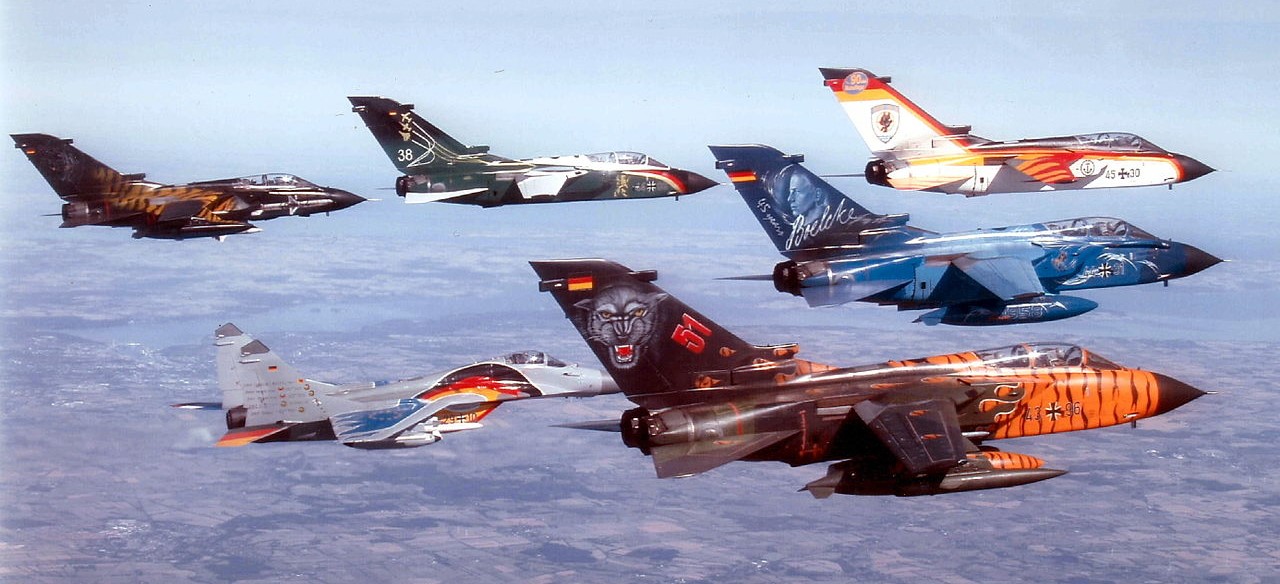
The result of the previous generation of European partnerships, the Anglo-German-Italian Tornado was primarily built as a low-altitude strike aircraft. Developed in the 70s, the Tornado used a variable-sweep wing, and was quite effective in its day. It also formed the basis for the Tornado ADV interceptor, all of which have been retired, and the ECR SEAD1 aircraft, which remains in service with Germany. The British Tornado fleet was retired in 2019, but it soldiers on with Germany, Italy and Saudi Arabia, at least for the next few years.
Dassault Rafale
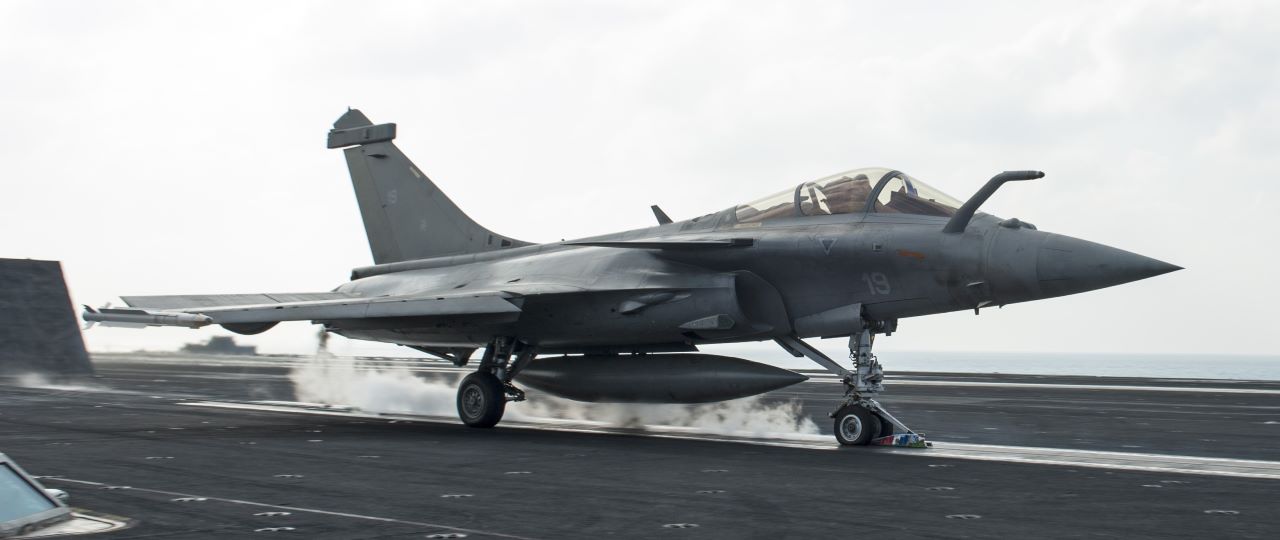
France was originally part of the Eurofighter consortium, but when the rest of the consortium decided not to adopt France's superior vision for the program, they left to build their own fighter.2 The result, the Dassault Rafale, was surprisingly successful, beating the Typhoon into service by several years and being generally considered the best option if you want a western fighter that isn't the F-35 for some reason. As a result, it's been a hit on the export market, with buyers including Egypt, Qatar, India, Greece, Croatia, Indonesia, Serbia and the UAE. The Rafale is also unusual in having a naval version, flown by France and ordered by India, and being the carrier for the French ASMP nuclear cruise missile. At least two were reported shot down during the skirmishes between India and Pakistan in May 2025, although its performance is impossible to evaluate given the lack of concrete information on what happened during that battle.
Dassault Mirage 2000

The previous-generation French fighter, the Mirage 2000 is, broadly speaking, the French equivalent to the F-16. The standard Mirage 2000C is primarily a fighter, although it served as the basis for the two-seat Mirage 2000N/D. The 2000N was France's main nuclear strike aircraft until it was retired in 2018, while 64 2000Ds remain in service as a conventional strike aircraft. Only about two dozen 2000Cs are still in the French inventory, although the type was an export success, with remaining operators including India, the UAE, Taiwan, Egypt, Peru and Greece. France has also provided some retired airframes to Ukraine, where they have been used in combat.
Saab JAS 39 Gripen
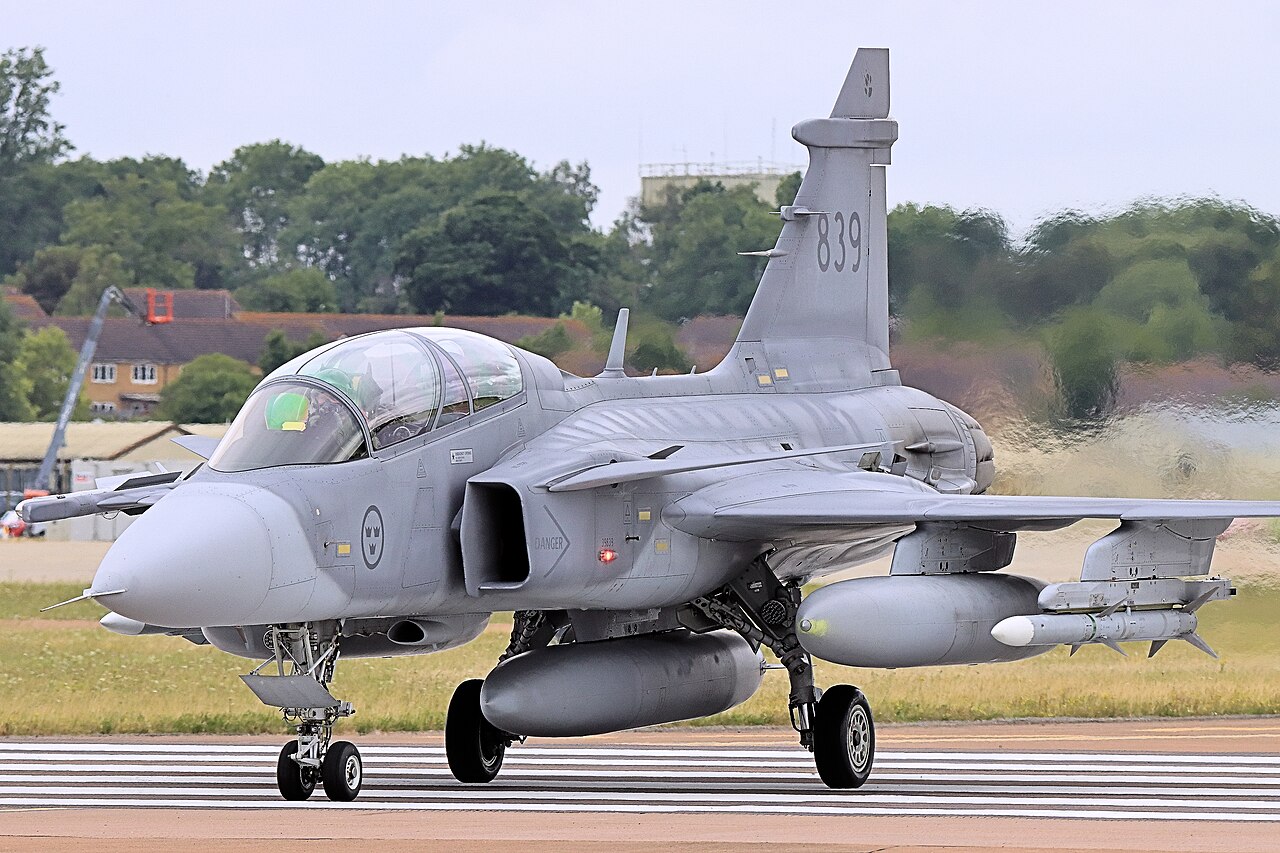
Sweden has always built its own planes, partially to maintain sovereignty and neutrality, and partially because it planned to fight from dispersed bases if the Sovietssomeone invaded, and other people's aircraft weren't really suitable for that. As a result, when they started designing a new fighter in the 80s, the result was a canard-bearing delta like the Typhoon and Rafale, but with only a single engine and on a smaller scale. The Gripen is by far the smallest of the major western fighters, with a max takeoff weight of only 30,000 lb, with even the relatively lightweight F-16 being a third heavier. This means less payload and probably a bit less range, but it's still a very capable aircraft. It's also designed to be maintained by less-skilled labor and supposedly cheaper to operate than other fighters, although the best information I have says that these advantages are often overstated. An improved version, the Gripen E/F, has recently been developed, with about 20% higher takeoff weight and more range and payload. The original version has been exported to Czechia, Hungary, South Africa and Thailand, while Brazil has bought Gripen E/Fs, and has even discussed a derivative to operate from carriers, although this would require Brazil's carrier dreams to become reality.
Mitsubishi F-2
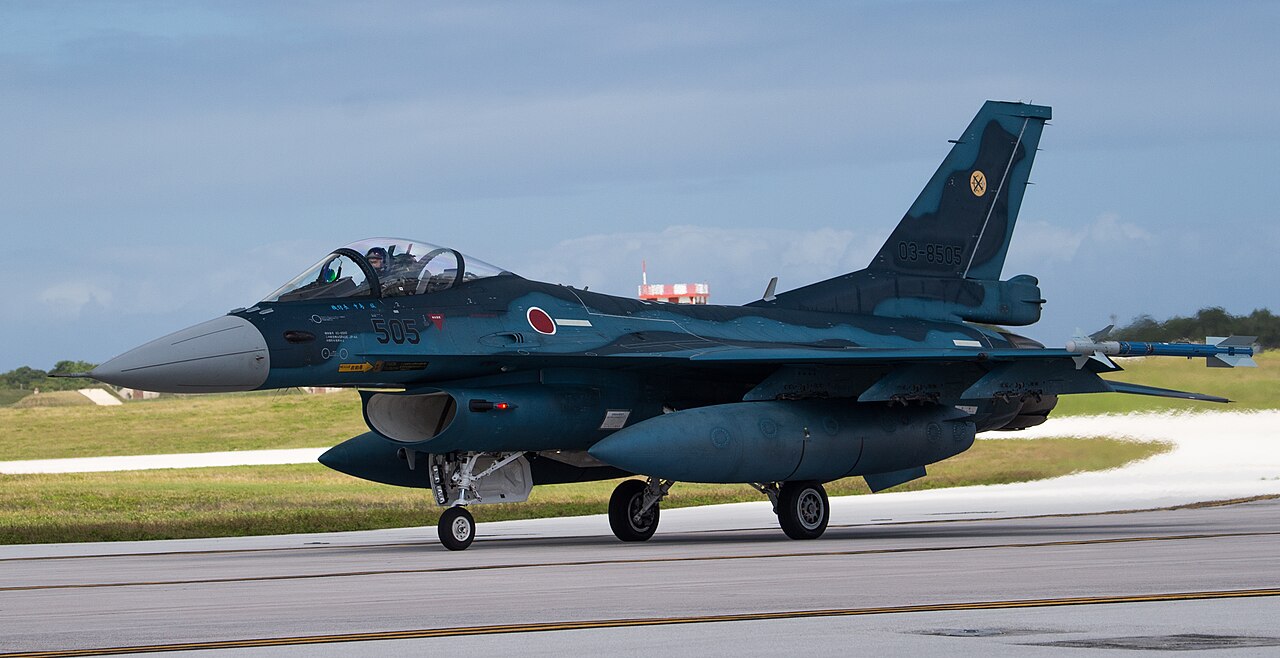
Japan has long been a customer for US-designed fighters, although their own aerospace industry has wanted to do more than assemble modified American designs. The in 1980s, they looked at developing a new lightweight fighter, but fearful of the American response to their doing so in a period of heightened economic tensions, they decided to split the difference, redesigning the F-16 so that it was basically a new plane but looked like the original. The result was the F-2, which had a bigger wing, new radar, and Japanese missiles, but was also vastly more expensive than just buying F-16s, even under a production license. About a hundred were bought before Japan decided to go back to collaborating with the Americans, and their aerospace industry remains a vital subcomponent supplier despite their inability to build their own planes.
KAI T-50 Golden Eagle

Much like Japan, South Korea has traditionally been a buyer of American aircraft, but in the 90s, decided that it might be worth developing their own planes, starting with a supersonic trainer that could also be converted into a light fighter, designated FA-50. The result is even smaller than the Gripen, but surprisingly capable as a light fighter/attack aircraft, with a decent radar and a wide array of weapons, and versions, both trainer and fighter, have been ordered by Indonesia, Malaysia, Poland, the Philippines and Thailand.
KAI KF-21 Boramae
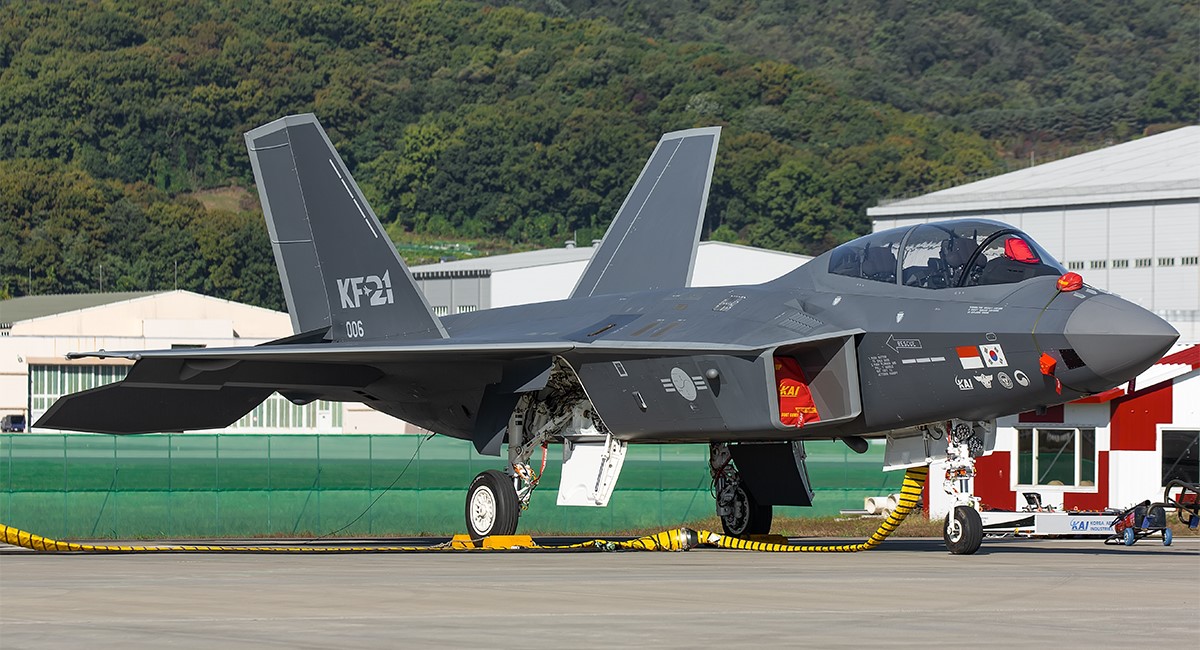
South Korea, having gotten a taste of combat aircraft development, decided to go all-in in the early 2000s building a fighter that could keep up with the latest western fighters like the Super Hornet. Despite buying F-35s in 2009, work continued, and prototypes are currently flying after a 20-year development period. A later version will apparently be fully stealthy, but the current one still carries weapons externally, limiting stealth. It's not entirely clear what capabilities the plane will have or if this was at all a good idea for South Korea, who so far has only been able to get Indonesia onboard as a partner, and not a particularly reliable one at that.
ADIC F-CK-1 Ching-kuo
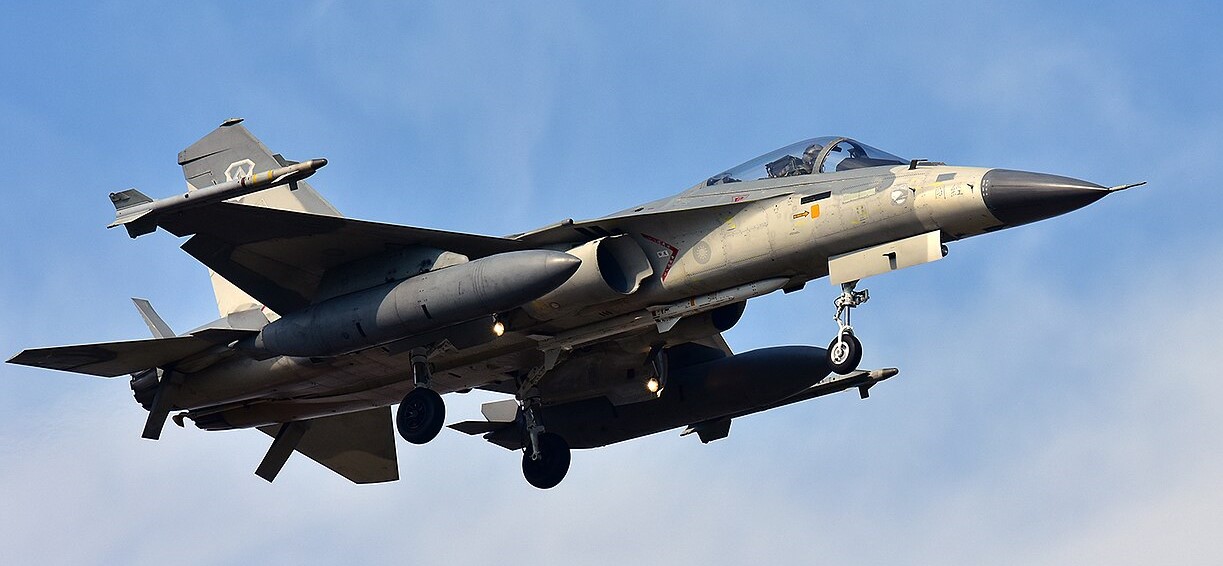
In the 1980s, increasing ties between the US and the PRC meant that arms sales to Taiwan, another traditional American client, were often refused. Due to a lack of anyone willing to sell them a modern jet fighter, the Taiwanese decided to build their own. The result was tiny and twin-engined, presumably because of export limitations, and further development was cut off when the Cold War ended and US-PRC relations cooled, allowing the Taiwanese to buy Mirage 2000s and F-16s.
BAe Hawk 200

The British equivalent of the T-50, this is a single-seat version of the popular Hawk trainer. Although subsonic, it is a reasonably capable light fighter/attack aircraft, used by Indonesia, Malaysia and Oman. The trainer it is based on has been widely exported, and does have the capability to carry cannon, bombs and short-range missiles like Sidewinder.
F-4 Phantom II
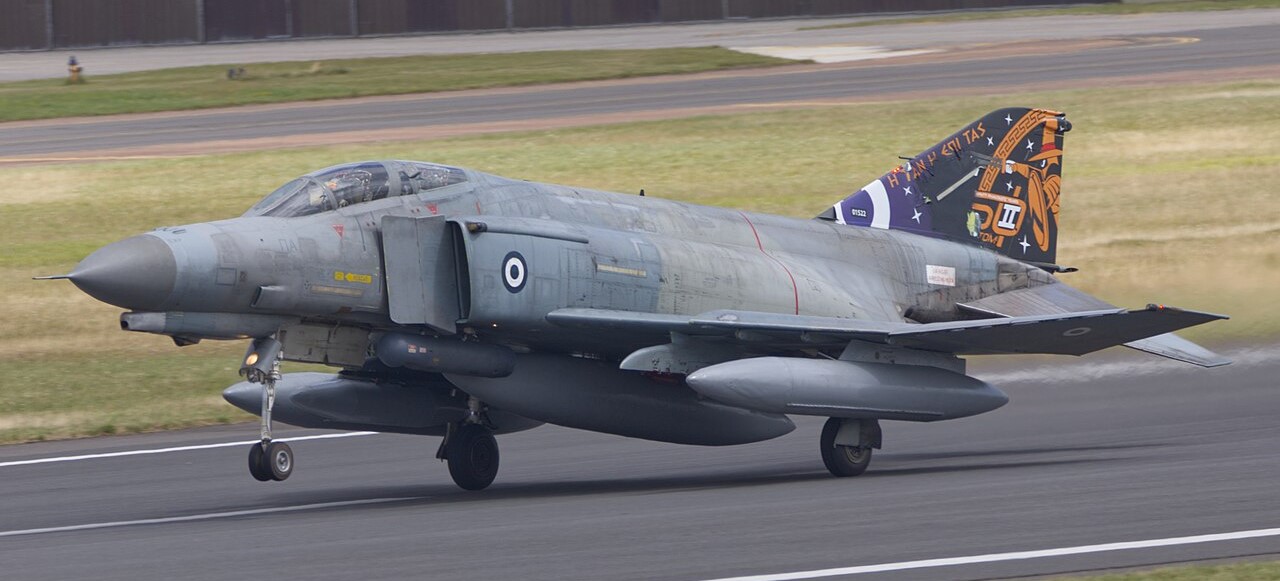
The Flying Brick. The St. Louis Slugger. The World's Largest Distributor of MiG Parts. Although long out of service in its native land, the Phantom, a Navy fighter later adopted by the Air Force and exported to basically everyone, soldiers on in a few smaller air forces. Powerful and fast but not particularly maneuverable, it was in service with Egypt, Japan and South Korea into the 2020s, and remains in use by Greece and Turkey to this day. It also continues to serve with Iran, although it is unclear how many of the planes, originally bought by the Shah, remain intact after Israel's recent ministrations.
F-5 Freedom Fighter/Tiger
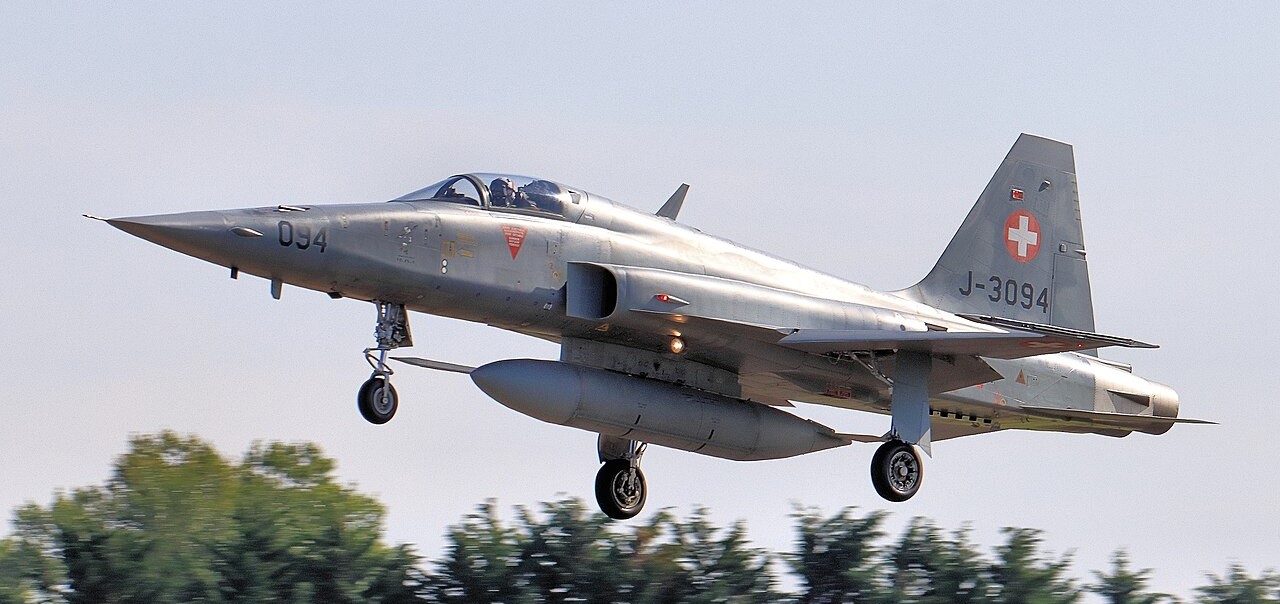
An American design from the early 60s that was intended to be a cheap day fighter for export to allies, the F-5 is clearly in the twilight of its career, but remains the mainstay of a number of third-string air forces who really just need something capable of forcing airliners to land. The most notable remaining operators are South Korea and Brazil, although both countries are phasing them out in favor of newer aircraft. It saw only very limited service with the US, where its primary job was simulating the MiG-21 in dogfights.

Comments
"its primary job was simulating the MiG-21 in dogfights"
Don't you mean the MiG-28? (ducks and runs)
Re: Rafales being shot down. It made a lot of headlines back when it (supposedly) happened but ever since then no substantial evidence have surfaced, no clear photos of the wreckage either by Indian or Pakistani sources, Indian MOD denies that it ever happened and so does Dassault. Maybe you have better sources that unequivocally can set the record straight there?
There are definitely pictures of what looks to be Rafale wreckage online, and which I trust over either Dassault or the Indian MoD, although I should probably hedge that statement with "reported" because I'm not finding as much evidence for the second one.
The "Tornado was primarily built as a low-altitude strike aircraft."
The original British project was for a replacement of the V Force bombers, the Valiant, Vulcan and Victors, getting a nuclear bomb from the UK to the Urals and maybe getting back to a sheet of radioactive glass.
To sell it to us and the Germans they added some conventional capabilities.
The Spanish arrived later.
The only Italian military aircraft shot down in combat after WWII.
The fighter version was a load of manure, the Brit gave us some to cover the period from the FIAT F-104 Starfighter withdrawal to the IOC of the EFA, but it was so bad that it was sent back with a stern letter and substituted with some F-16s ADF from Davis Monthan.
The French deciding to build their own Rafale instead of contributing to Eurofighter was undoubtedly Not Invented Here, but they also were (and still are) the only European military that needed a CATOBAR capable jet. Haven't done the detailed research, but I do remember reading that the French wanted a carrier Eurofighter variant, the rest of the partners didn't, and that gave France sufficient cause to quit.
I wasn't even trying to say that the French were necessarily wrong to leave. But they have a reputation for being a difficult partner in international weapons development. (The only people who are worse are the Americans, who will completely ignore you. But we at least have the decency to pick up pretty much the entire tab.)
Yeah, the French have an awful reputation as development partners. But on this one occasion, there actually was a second, more valid, reason other than just arrogance.
@bean I would disagree that Americans had bad reputation. I would say even quite opposite, Americans had a very good reputation in collabroration military project. Yes, they usually want to have the main word, but that is expectable if you pay 90% of the cost.
Americans do not have problem to listen to you, you have very nice discussion, Americans do not have problem to admit that you are right and Americans also do not have a big problem to change the specification if it do not hurt them. I would say that americans are usually letting you to have a say in the project completely dispropotional to what you and them invested. And I would say it is symbiosis, US-Europe military projects often work far better than US domestic ones.
I am having trouble coming up with a very long list of proper joint ventures, at this point mostly just JSF, RAM and MBT-70. JSF hasn't been a particularly good project, RAM had a rocky development and MBT-70 never came to pass. Could obviously be missing something, but assuming we aren't talking about cases where the US is just selling stuff to allies, I don't see it as being particularly symbiotic.
The Typhoon airframe has several advantages over the Rafale and the RAF's Tranche 4 variant is distinctly superior. Typhoons are also can carry a more versatile range of munitions. The main advantage of the Rafale is its massive drop tanks and the ability to deliver a nuclear-tipped cruise missile.
Most western military aircraft, including the Eurofighter and Rafale, have MIL-STD-1760 "USB for weapons" launch rails / hardpoints. So a particular missile or bomb not being available for Rafale probably means that nobody has done any test firings yet, not that it wouldn't work. (Bean can correct me on this.) There are more Eurofighters in various different air forces, so I'm not surprised that they've been tested with a wider range of munitions.
And there's always the Ukrainian option. If France could produce enough Rafales to spare some for Ukraine, within a month it would be capable of firing every air-launched weapon manufactured worldwide :-)
That's not quite how it works. 1760 is a data transfer standard, nothing more. It says nothing about the physical interface (probably fairly trivial, but I don't have firm information) and you still have to write custom software to get the weapon to talk to the plane's computer, which is plausibly in the tens of millions of dollars given how sophisticated weapons are and how much you don't want the software to screw up and waste an expensive missile. There's an attempt to solve this using something called Universal Armament Interface (UAI), which promises "plug and play" capability. From everything I've heard, that's basically a lie, and implementing UAI is going to eat whatever savings you get for a long, long time.
(The physical interface isn't completely trivial either, mostly from a stores separation point of view. You want to be very sure that the weapon actually leaves the aircraft and there isn't some lurking trick of aerodynamics that means it makes contact with the plane later on.)
At the same time, yeah, what stores a modern fighter carries is mostly a matter of what someone has paid to integrate, not a fundamental property of the design.
@Hugh Fisher (Rafale-CATOBAR) France withdrew from Eurofighter project long before UK selected JSF as their next carrier based aircraft (and UK aslo needed new carrier-vased aircraft). Also navalised Typhoon was offered to UK and India, so I would say there probably was not a huge problem with navalised Typhoon.
But I can completely imagine French MoD arguing that it should not be France which pays for development of navalised variant and this lead to break up.
PS: In my opinion big reason for France to leave was the problem with very ideological German foreign military sales policy. BAE systems could tell...
@bean
This was more like: "I have never heard someone complaining on joint development with US." and "I have even heard pretty positive opinions on it." so I would not say that US had a bad reputation on joint military projects, definitely not worse than France (and stories about French arogance are also a bit of exxageration, but they are definitely very problematic).
My comment about the US was intended to be self-deprecating humor. The more serious answer was that the US basically doesn't do the sort of joint ventures which lead to things like the Eurofighter. We do the thing we want, and if people want to chip in for development in exchange for work share, we're generally happy to have them. Which, if everyone understands that going in, can work pretty well.
I am doubtful about this. I cannot think of a single jet that was designed for non-naval use and then successfully navalized. The closest example is the YF-17, which was entirely redesigned and thus doesn't really count. But it also hasn't been seriously attempted that often, the only case that springs to mind is the F-111B, which clearly fails "successful". Even back in the prop era, when there was less need for specialization, the Seafire had a lot of problems that took major redesign to fix.
OTOH the Seafire was rushed into service.
The MiG-29 and Su-27 seem to have been navalized despite being designed as land based fighters (and probably not even redesigned as much as the F/A-18).
There was also the Sea Vampire and Sea Hawk and even the T-45.
How did I miss those? You're right on the Russian planes, although I'm not sure how much information we would have on their flaws. Also the T-45 and Sea Vampire, and on the latter I was able to check the new David Hobbs book, and it was pretty successful with fairly minor mods and was kept out of operational service only because it was kind of short on endurance. The Sea Hawk wasn't navalized. Naval variants were built into the program from the start, and the RAF backed out before things got anywhere on their end.
@bean I agree that the US are basically only doing the joint ventures where ather countries are junior members of the progam. But what I have heard, they usually have final say but are OK with accepting others requirements. I think that JSF is very good example, because I think it is better fighter jet for the European requirements than for the US ones.
I find it pretty surprising that there was basically not a single modern western fighter jet that was navalised, but it is true. On the other side Typhoon is pretty ideal for navalization, strong engines, STOL capability, producer that made multiple naval aircraft.
I'm not sure that's true. Strong engines and STOL capability applies to basically every fighter built in the last 40 years, and while BAe has some experience there, it's been a very long time since they did a naval fixed-wing aircraft. I also suspect there may be some trouble with the inlet configuration, which is basically absent on naval aircraft. Not sure if that's coincidence, but the closest I can think of is the F-8 and A-7, and I don't think that was a particularly popular configuration.
@Matt C I would say that the Rafale and Typhoon look like comparable planes, but they are in fact more different. Typhoon is really high performance air superiority fighter, but they are pretty hard to operate, especially if you have only few of them (Austrian never-ending story) and early variants are impossible to upgrade.
So you are completely right, Typhoon is far better fighter than Rafale, also the France was never particularly strong in electronic warfare (unlike UK and Germany who were designers of Typhoon). But Rafale is designed as mid-performance, easier to maintain, easier to upgrade, more reliable and with many properties that made it far more succesfull on the international market.
@bean To be fair I do not know what you actually need to change on the aircraft to make it carrier-capable, I always thought that you add a hook and solve corrosion problems, but I have googled something about the topic and it is probably far more complicated.
@StupidBro
A few things are common from what I recall. Naval aircraft land at a more nose-up attitude to fly slower on approach engage the tailhook, so you may need to move the main landing gear aft to avoid tail strikes. This also changes the balance of weight between main and nose landing gear (normally about 90% main, 10% nose; for naval it tends more towards 80-20); this means the nose gear has to be more robust as well. Plus beefing up the landing gear in general to absorb the greater impact of carrier landings. And then possibly reinforcing the structure in general; beefing up the gear doesn’t help much if landing just breaks a wing spar instead. And the wing itself might need to be bigger, too - see the F-35C compared to the A model.
I expect this is why we see more naval-to-land conversions than vice-versa. It’ll still weigh more than it would have if designed to be land-based in the first place, which cuts into performance, but depending on what else is in the development pipeline, it could still be the better option.
The F/A18L didn't do very well on the market (which all but two operators could have used) so cheapness does seem to be more valuable than whatever extra performance can be gained from not being carrier capable.
@Hugh Fisher - Because of the huge sensor-based capabilities of new modern weapons, to the point that they are called "smart weapons" because "precision" just doesn't cut it, code integration can cost hundreds of millions and many years. Adding Meteor to F35 for example is a very sore spot in this regard.
@Stupidbro - Rafale has a very good EW suite actually, Thales gobbled up a huge chunk of the Cold War European defence legacy. The Typhoon's advantage is that it was a slightly newer airframe and therefore has more room for upgrades. For many years this potential was sat on because none of the consortium partners except the British were spending on defence R&D.
@Matt C Thales is great company in everything electronic related. Their sonars are so good that US buys them. I have never sad, that Dassault Rafale has a bad EW suit even it is the thing in which France was historically not a particularly strong player. But the company that develops EW suits for the Typhoon is the same company that develops EW suits for the F-35...
I am pretty sure that Typhoon is not a newer airframe. France leaved the European project and then developed Rafale, but the Typhoon was already in development. Also you may be mislead that on wiki the first flight of Typhoon was 7 years after Rafales, but that is because they count Rafales demonstrator (Rafale A demo) as first flight of the Rafale, but they do not count Typhoons demostrator (BAe EAP) as first flight of the Typhoon. In reality, they both had the first flight of their flight demostrators at 1986. The Typhoon was delayed at the end of its development because of complicated German politics, so it was introduced into air force 2 years after the Rafale.
Also, the upgradeability and maintenance are the biggest problem of Typhoon (and the biggest reason to choose Rafale). In case of upgrading Tranche 1 of the Typhoon, it is cheaper to just buy a new one (it is like real disaster). Tranche 2 is better. And that was the reason why there were not many new things for Typhoon, because for the first ten years everyone was solving these problems. Since Tranche 3 it is manageable, but upgradeability is still not strong card of the Typhoon.
France left the Typhoon programme for many reasons, but the most capability-related one is that they wanted to finalise the design and start producing straightaway. Typhoon was finalised a couple of years later and this is in part why it has more upgrade capacity. The issue of the Typhoon tranches is nothing to do with any problems or upgrades, but simply that when taking the cost of the airframes and remaining life and number of expected aircraft in service it simply worked out cheaper to build new airframes. Quite a common thing and not only in aeronautics. Upgrades were mainly delayed because the Luftwaffe refused to spend money on the Typoon, not expecting a war to use it in until about 3 years ago. With the RAF Mk2 radar however, Typhoon T4 will have a distinct edge over Rafale that can't be beat.
@Matt C
If you want some info about upgradeability of Typhoon, just google something about UK, or Austrian Tranche 1 Typhoons and their attempts to upgrade it. Austria paid 1.6 billion Euro for upgrade of 15 Tranche 1 aircrafts and it was still pretty mild upgrade (they are newly capable of night bombing missions and BVR air combat).
And I completely agree with you that Typhoon has a edge over Rafale, especially in Tranche 4 variant. I am only saying that they are pretty uncomparable plane, because you are comparing a high-end fighter with normal multirole fighter.